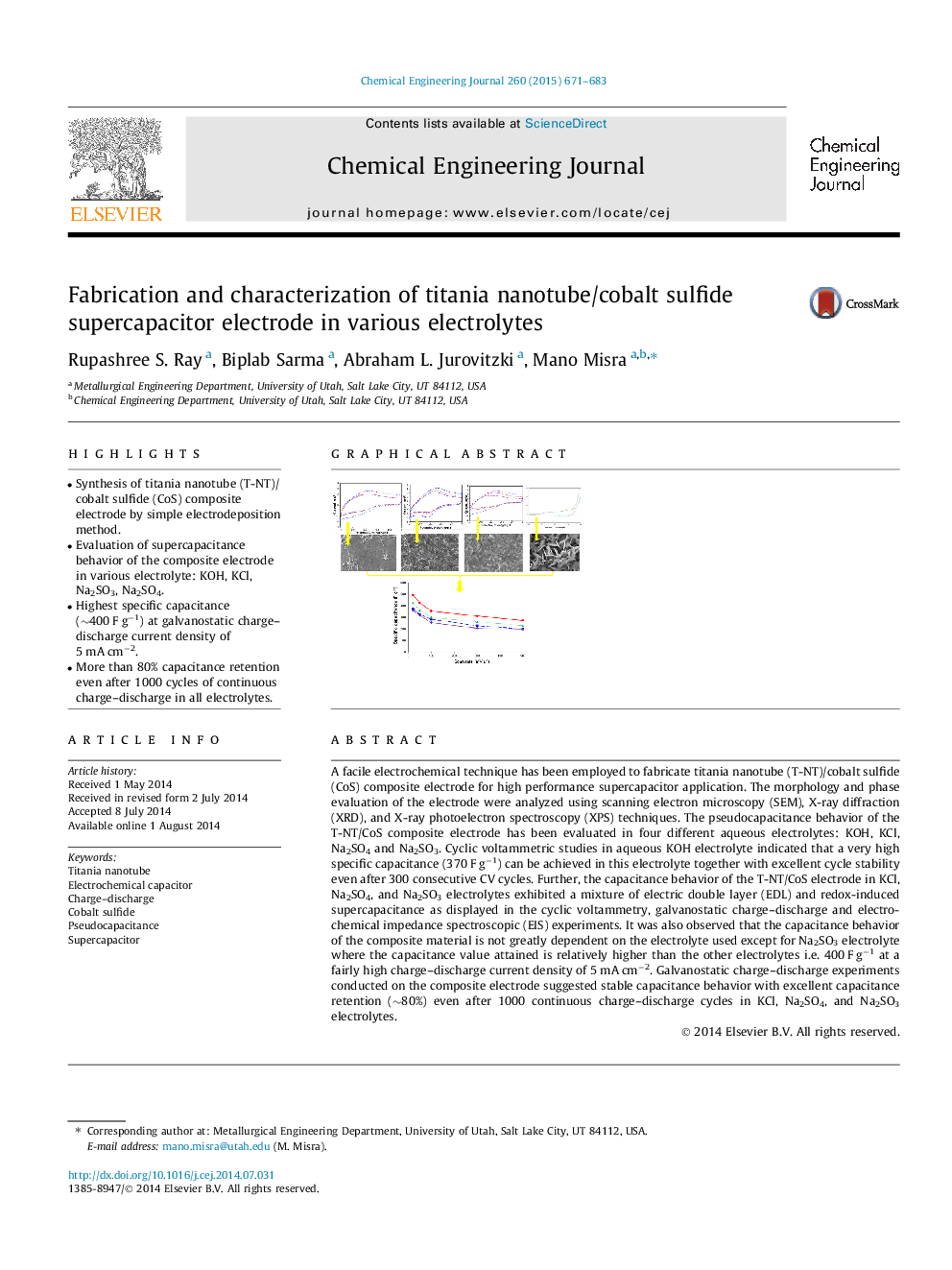| کد مقاله | کد نشریه | سال انتشار | مقاله انگلیسی | نسخه تمام متن |
|---|---|---|---|---|
| 146816 | 456378 | 2015 | 13 صفحه PDF | دانلود رایگان |
• Synthesis of titania nanotube (T-NT)/cobalt sulfide (CoS) composite electrode by simple electrodeposition method.
• Evaluation of supercapacitance behavior of the composite electrode in various electrolyte: KOH, KCl, Na2SO3, Na2SO4.
• Highest specific capacitance (∼400 F g−1) at galvanostatic charge–discharge current density of 5 mA cm−2.
• More than 80% capacitance retention even after 1000 cycles of continuous charge–discharge in all electrolytes.
A facile electrochemical technique has been employed to fabricate titania nanotube (T-NT)/cobalt sulfide (CoS) composite electrode for high performance supercapacitor application. The morphology and phase evaluation of the electrode were analyzed using scanning electron microscopy (SEM), X-ray diffraction (XRD), and X-ray photoelectron spectroscopy (XPS) techniques. The pseudocapacitance behavior of the T-NT/CoS composite electrode has been evaluated in four different aqueous electrolytes: KOH, KCl, Na2SO4 and Na2SO3. Cyclic voltammetric studies in aqueous KOH electrolyte indicated that a very high specific capacitance (370 F g−1) can be achieved in this electrolyte together with excellent cycle stability even after 300 consecutive CV cycles. Further, the capacitance behavior of the T-NT/CoS electrode in KCl, Na2SO4, and Na2SO3 electrolytes exhibited a mixture of electric double layer (EDL) and redox-induced supercapacitance as displayed in the cyclic voltammetry, galvanostatic charge–discharge and electrochemical impedance spectroscopic (EIS) experiments. It was also observed that the capacitance behavior of the composite material is not greatly dependent on the electrolyte used except for Na2SO3 electrolyte where the capacitance value attained is relatively higher than the other electrolytes i.e. 400 F g−1 at a fairly high charge–discharge current density of 5 mA cm−2. Galvanostatic charge–discharge experiments conducted on the composite electrode suggested stable capacitance behavior with excellent capacitance retention (∼80%) even after 1000 continuous charge–discharge cycles in KCl, Na2SO4, and Na2SO3 electrolytes.
Figure optionsDownload as PowerPoint slide
Journal: Chemical Engineering Journal - Volume 260, 15 January 2015, Pages 671–683
